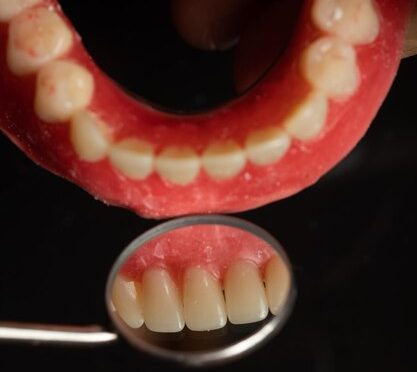When a person loses a tooth, choosing the right denture is essential to restore both function and aesthetics of the mouth. There are several types of dentures available, with flexible dentures and acrylic dentures being the most common. While each type has its own advantages and limitations, flexible dentures have gained popularity due to their various benefits over acrylic dentures.
One of the main advantages of flexible dentures is comfort. Made from lighter and more flexible materials, these dentures adapt better to the natural shape and movement of the jaw, providing a more comfortable wearing experience. This reduces pressure and discomfort for the user. In contrast, acrylic dentures tend to be more rigid, which can cause discomfort when worn for extended periods.
In addition to comfort, flexible dentures offer superior aesthetics. The materials used in their fabrication are often more transparent and have a color closer to natural gums, making them appear more natural. This allows users to feel more confident when wearing them. On the other hand, while acrylic dentures can be color-adjusted, they often appear more noticeable and less natural.
Durability is another factor that makes flexible dentures a better choice. These dentures are more resistant to impact, increasing their longevity for daily use. They are less likely to crack or break, making them a better long-term investment compared to acrylic dentures, which may need frequent replacements due to damage.
Research by Prof. Dr. drg. Titik Ismiyati, M.S., Sp. Pros.(K) has highlighted the differences between acrylic resin and nylon thermoplastic materials as denture bases. Nylon thermoplastic, commonly used in flexible dentures, has been shown to offer greater comfort, aesthetics, and durability. This study also underscores the importance of selecting materials based on a patient’s specific needs and clinical conditions.
Another significant benefit of flexible dentures is their ease of maintenance. Their non-rigid nature makes them easier to clean, as they do not have many crevices where food particles can get trapped. This improved hygiene helps prevent oral health issues and infections. In contrast, acrylic dentures require extra care and can be more challenging to clean effectively.
This is supported by research conducted by Dr. drg. Archadian Nuryanti, M.Kes., which examined the effect of rambutan leaf extract concentration on bacterial growth on acrylic resin plates. The study emphasized the importance of maintaining denture hygiene, as acrylic resin surfaces can be a breeding ground for bacteria like Staphylococcus aureus . Given their fewer crevices and higher resistance to cracks, flexible dentures help reduce infection risks and improve oral cleanliness.
While flexible dentures offer many advantages, individual patient needs must also be considered. In some cases, acrylic dentures may be more suitable, depending on the patient's oral condition or budget. However, in general, the comfort, aesthetics, and durability of flexible dentures make them an appealing choice for those seeking a practical, natural-looking, and long-lasting solution.
The decision between flexible and acrylic dentures should be based on several factors, including comfort, aesthetics, durability, and ease of maintenance. By understanding the benefits of each type, patients can make informed decisions that best suit their needs and lifestyle. Consulting a dentist is highly recommended to determine the most suitable option based on oral health conditions and personal preferences.
The choice between flexible and acrylic dentures impacts not only comfort and aesthetics but also supports Sustainable Development Goals (SDGs): SDG 3: Good Health and Well-being – Flexible dentures promote better oral health and hygiene; SDG 4: Quality Education – Raising awareness about denture materials helps improve public knowledge; SDG 10: Reduced Inequality – Providing inclusive access to appropriate dental care ensures everyone has the opportunity to receive optimal treatment.
References
Prof. Dr. drg. Titik Ismiyati, M.S, Sp. Pros.(K), Differences in the Use of Acrylic Resin and Nylon Thermoplastic as Denture Bases in General and Specialist Dental Clinics at RSGM UGM Prof. Soedomo (2019), https://etd.repository.ugm.ac.id/penelitian/detail/200106
Dr. drg. Archadian Nuryanti, M.Kes.,, Effect of Rambutan Leaf Extract Concentration on Bacterial Growth (Staphylococcus aureus) on Heat-cured Acrylic Resin Plates (In Vitro Study), https://etd.repository.ugm.ac.id/home/detail_pencarian_downloadfiles/707875
Author: Rizky B. Hendrawan | Editor: Shinta | Photo: Freepik



